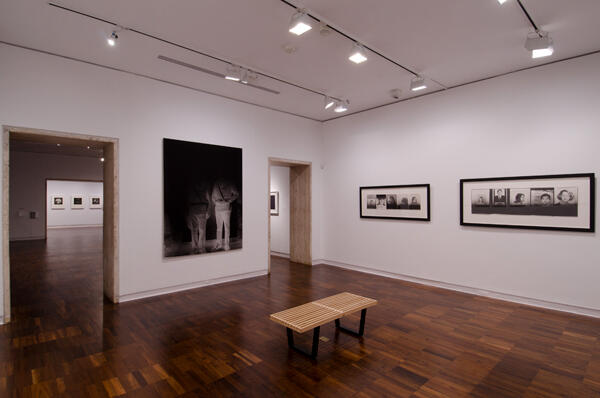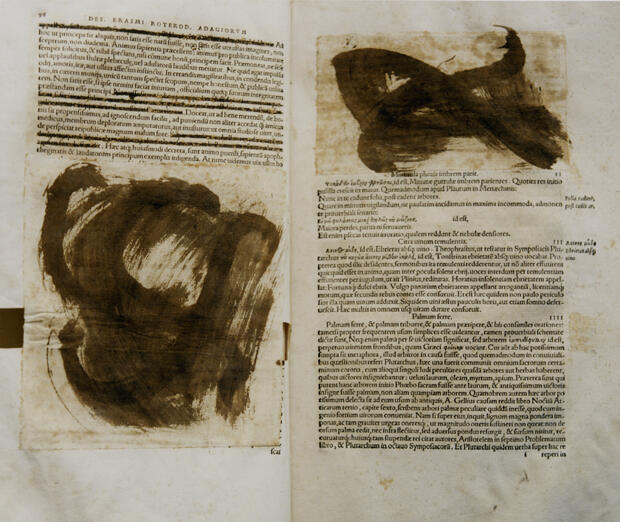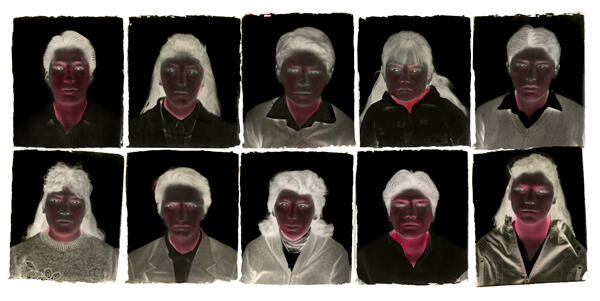Milagros de la Torre
Americas Society, New York
Milagros de la Torre examines notions related to memory, identity, violence, pain and trauma with around forty sober photographs with great objectual qualities in her first monographic in New York.

The daughter of a brilliant general from Lima specialized in fighting against terrorism, De la Torre grew up surrounded by a particular “normality” – which implied armed chauffeurs, innovative routes to school, secret meetings in the middle of the night, revolving lights under her window... The artist’s work seems to maintain a particular relationship with a past that she perhaps never completely understood and which she explores beyond her own life experience, through the use of photography as a medium which should be mistrusted.
Thus, Fears (2004), her first project carried out without a camera, arises from a study performed in Mexico on the internal and unconfessed fears of the citizens. A series of monochromes in an intense dark color (which emulates the first color we see when closing our eyes) has almost imperceptible phrases also in a dark color printed on them, such as “that I may be hit by a lost bullet” or “that they take my daughter from the park, at a moment when I am distracted”.
In Under a Black Sun (1991-1993) De la Torre recovers a rudimentary portrait technique used by the street photographers of Cuzco − a process which implies the lightening of the color of the skin of the portrayed and which produces an “improvement” of the individual which is not only aesthetic but also racial, cultural and economic. Stopping the process in the middle of its development, the artist reveals the manipulation and distortion inherent in the photographic medium. In a similar way, in It All Stays in the Family (1994) she resorts to a defective technique, by which a desynchronized flash produces partially exposed negatives that partly hide the photographed individuals.
The Last Things, The Lost Steps (both of 1996) and Bulletproof (2008) conjure the physical presence of represented objects. In the first case three objects belonging to a psychiatric hospital of Lima appear impeccably photographed in black and white, against a dark background. Covered by a layer of wax that adds a corporeal quality and another veil of signification, they imitate 19th century photography – that pretended to find medical evidences of illness based on photographic shots. Bulletproof comprises eleven images of natural size garments modified to resist bullet impacts. The non present bodies of those who wear them are, however, patently present. The Lost Steps is made up of fifteen photographs of incriminating evidence from the archives of the Lima Palace of Justice. Utilizing a 19th century technique in which the lens does not completely cover the negative, the artist resorts to the halo that is formed around the object to allude to the veil of mystery and the darkness that overcomes the human soul.
Fundamental series such as Armored, Helmets, Censored or Troubles de la Vue, in collaboration with José Manuel Prieto, close an emotional and interesting exhibition that reflects on the understanding of photography as an apparatus of perfect register, as well as on the trace, de-coding and comprehension of the darkest side of each of us.
-
 Milagros de la Torre at Americas Society. Photograph by Arturo Sanchez.
Milagros de la Torre at Americas Society. Photograph by Arturo Sanchez. -
 Gelatin silver prints; 52.25 x 15.5 inches. Courtesy of the artist.
Gelatin silver prints; 52.25 x 15.5 inches. Courtesy of the artist. -
 Matte C-print mounted on aluminum; 40 x 48 inches. Courtesy of the artist.
Matte C-print mounted on aluminum; 40 x 48 inches. Courtesy of the artist. -
 Hand-dyed toned gelatin silver print, Mercurochrome. Polyptych, variable dimensions. Image Courtesy of Milagros de la Torre.
Hand-dyed toned gelatin silver print, Mercurochrome. Polyptych, variable dimensions. Image Courtesy of Milagros de la Torre. -
 Hand-dyed toned gelatin silver print, Mercurochrome. Variable dimensions. Image Courtesy of Milagros de la Torre.
Hand-dyed toned gelatin silver print, Mercurochrome. Variable dimensions. Image Courtesy of Milagros de la Torre.




